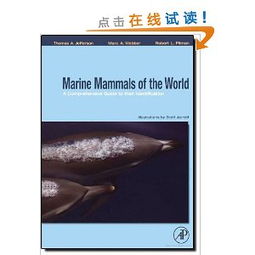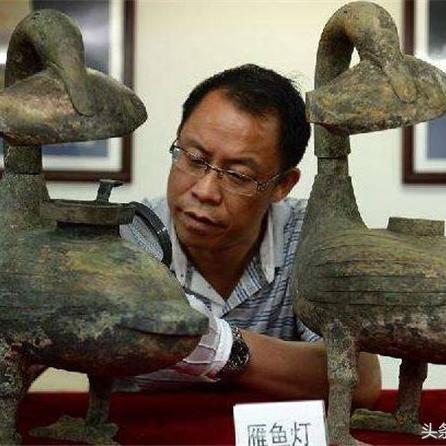A Comprehensive Guide to Textile Science and Technology
This comprehensive guide to textile science and technology provides a thorough overview of the field, highlighting its importance in modern society. From the basic principles of fiber production to advanced techniques such as electrospinning and 3D printing, this guide covers all aspects of textile science and technology. It covers topics such as dyeing and finishing, environmental sustainability, and the latest developments in materials science and engineering. With its focus on practical applications and innovative solutions, this guide is essential for anyone interested in the world of textiles.
Introduction Textiles have been a fundamental part of human civilization since the dawn of time. From the simple loom-woven fabrics of ancient Egypt to the intricate designs of modern fashion, textiles have played a crucial role in shaping our culture, economy, and daily lives. In this guide, we will explore the world of textile science and technology, providing you with an overview of the various materials used in clothing, home furnishings, and more. We'll also delve into the manufacturing process, highlighting key steps from fiber selection to finished product. By the end of this guide, you'll have a deeper understanding of the science behind your favorite textiles, and be empowered to make informed decisions about where to shop or invest in textile products.
Types of Textile Materials Textile materials are classified based on their composition, structure, and properties. Here's a table summarizing some of the most common types:
| Type | Description |
|---|---|
| Wool | Natural fiber that is soft, warm, and durable. |
| Cotton | Produced by the cotton plant, widely used for clothing and home textiles. |
| Linen | A natural fiber that is lightweight, breathable, and absorbent. |
| Silk | Made from the cocoon of silkworms, known for its luxurious texture and durability. |
| Polyester | Man-made fiber derived from petroleum, popular for its strength and resistance to wear and tear. |
| Nylon | Another man-made fiber, known for its strong durability and elasticity. |
| Rayon | A lightweight, breathable fabric made from silk or synthetic fibers. |
| Acrylic | A synthetic fiber derived from oil, offering good resistance to water and chemicals. |
| Tencel | A wood-based fiber that is biodegradable, soft, and hypoallergenic. |
-
Fiber Selection Choosing the right fiber for a particular application requires consideration of factors such as durability, comfort, breathability, colorfastness, and cost. For example, wool is ideal for winter wear due to its warmth and moisture-wicking properties, while cotton is commonly used for summer clothes due to its breathability and comfort.
-
Manufacturing Processes The manufacturing process of textiles involves several stages, from raw material procurement to final product assembly. Here's a breakdown of the key steps:

| Step | Description |
|---|---|
| Raw Material Collection | Gathering raw materials such as cotton seeds, wool, linen, etc. |
| Preparation | Cleaning, sorting, and processing the raw materials to remove impurities and prepare them for further processing. |
| Dyeing | Applying dyes to the raw materials to change their color and texture. |
| Weaving | Using warp threads (vertical) and weft threads (horizontal) to create a woven fabric. |
| Knitting | Using circular needles to create a knitted fabric. |
| Embroidery | Adding decorative details using small stitches. |
| Printing | Applying patterns onto the fabric using different techniques such as screen printing, pad printing, etc. |
| Finishing | Adding finishing touches such as ironing, sewing, and laundering to enhance the appearance and durability of the fabric. |
-
Case Study: Tencel Clothing Tencel is a wood-based fiber that is gaining popularity in the textile industry for its sustainability and eco-friendliness. Here's how it's made:
-
Raw Material Collection: The wood chips are collected from sustainably managed forests.
-
Preparation: The wood chips undergo cleaning and screening to remove impurities.
-
Dyeing: The wood chips are dyed using environmentally friendly dyes.
-
Weaving: The dyed wood chips are then woven into a fabric using a specialized machine.
-
Knitting: The fabric is knitted into a garment using a knitting machine.
-
Finishing: Finally, the garment is washed and dried to ensure its quality and longevity.
-
Sustainability and Eco-Friendliness As consumers become more conscious of the environmental impact of their purchases, textile companies are investing in sustainable practices to meet market demands. This includes using renewable energy sources for manufacturing processes, reducing waste through recycling and reusing materials, and sourcing materials ethically from suppliers. By adopting these practices, textile companies can not only meet consumer expectations but also contribute to a more sustainable future.
Conclusion Textiles are not just a means of clothing; they are a reflection of our cultural heritage, economic status, and personal style. By understanding the science behind textiles, you'll be able to make more informed choices when shopping for clothing, home furnishings, or other textile products. Remember, sustainability is not just a trend; it's a way of life that we must all embrace if we want to leave a positive impact on the planet. So why not start your journey today? Let's explore the wonders of textiles together!
纺织品是日常生活中不可或缺的组成部分,它们在我们的衣、食、住、行等方面发挥着重要作用,为了更好地了解纺织品,我们有必要了解一些相关的科普名称和相关知识,本篇文章将为您介绍一本关于纺织品科普名称大全的图书,并通过英文案例说明来进一步加深理解。
纺织品科普名称大全图书内容概述
纤维类型
在纺织品中,纤维类型种类繁多,包括但不限于天然纤维和合成纤维,天然纤维包括棉花、蚕丝、羊毛等,而合成纤维则包括涤纶、尼龙等,这些纤维类型都有其独特的性质和应用领域。

纺织工艺
纺织工艺是纺织品生产过程中的重要环节,包括织造、印染、绣花等,这些工艺不仅涉及到纺织技术的创新,还涉及到环保和可持续性的考虑,环保纺织工艺注重使用可再生资源,减少环境污染。
纺织品分类
根据不同的分类标准,纺织品可以有很多种分类方式,根据用途分类,纺织品可以分为服装、家居用品、装饰品等;根据材质分类,纺织品可以分为棉质、丝绸、羊毛等,还有根据颜色、图案、功能等分类方式。
英文案例说明
纤维类型案例分析
以天然纤维为例,棉花是一种常见的纺织原料,棉花具有吸湿性好、保暖性强等优点,因此在服装和家居用品等领域广泛应用,棉花还可以通过染色和加工制成各种颜色和图案的纺织品,满足不同消费者的需求。
纺织工艺案例分析
以环保纺织工艺为例,近年来,越来越多的企业开始注重环保和可持续性,环保纺织工艺注重使用可再生资源,减少环境污染,某企业采用生物降解材料制作衣物,不仅环保,而且符合现代消费者的审美需求。
纺织品科普名称图书表格说明
以下是关于纺织品科普名称图书的表格说明:
| 类别 | 术语 | 示例说明 |
|---|---|---|
| 纤维类型 | 天然纤维 | 棉花、蚕丝、羊毛等 |
| 合成纤维 | 涤纶、尼龙等 | |
| 纺织工艺 | 织造 | 包括梭织、针织等多种工艺 |
| 印染 | 包括活性染料染色、酸性染料染色等多种工艺 | |
| 纺织品分类 | 按用途分类 | 服装、家居用品、装饰品等 |
| 按材质分类 | 根据颜色 | 如棉质衣物有各种颜色可选 |
| 按图案分类 | 根据功能 | 如保暖衣物有各种图案可选 |
| 其他相关术语 | 环境友好纺织工艺 | 注重使用可再生资源,减少环境污染的纺织工艺 |
本篇文章介绍了纺织品科普名称大全图书的内容概述和英文案例说明,通过了解这些科普名称和相关知识,我们可以更好地了解纺织品的特点和应用领域,我们也应该关注纺织品的发展趋势和环保问题,为保护环境做出自己的贡献。
Articles related to the knowledge points of this article:
Promoting Textiles in Shaoxing:A Case Study
Transforming Textiles with Creative Poster Materials



